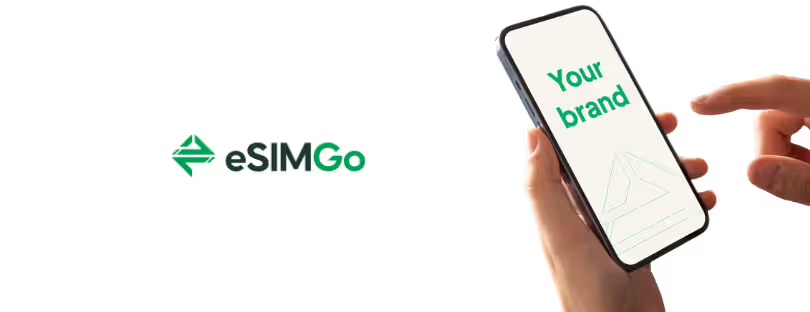
Apple Brings eSIM to iPhone
An embedded SIM (eSIM) is a form of programmable SIM that is embedded directly into a device. Unlike physical SIM cards that can be swapped out, an eSIM is permanently integrated into the device’s hardware by the manufacturer. esim iphone
eSIMs allow for remote provisioning of network connectivity. Rather than having to physically insert a SIM card, eSIM-capable devices can have cellular plans remotely downloaded and managed over the air. This allows users to activate or switch cellular networks digitally without having to obtain a physical SIM card.
The eSIM specification was created by the GSMA to establish a standard for embedded SIMs. It defines both remote provisioning standards and an interface that allows the eSIM to communicate with device hardware and operating systems. This enables eSIMs from different manufacturers to work consistently across devices.
eSIMs store network profiles, which contain information like subscriber identities and authentication keys. By downloading different profiles, users can easily switch between networks and plans. Profiles can also be stored when travelling abroad, avoiding roaming charges. eSIMs allow for dual SIM functionality, with multiple profiles active at the same time.
Overall, eSIMs offer increased flexibility and convenience over physical SIM cards. The move to embedded SIMs eliminates the need to physically switch SIMs when changing networks or plans. It enables new applications like dual SIM capability while retaining security through authentication and digitally managed profiles.
eSIM in iPhones esim iphone
Apple first introduced eSIM technology with the iPhone XS, iPhone XS Max, and iPhone XR in 2018. Since then, all new iPhone models have come with eSIM capability.
- iPhone 11, iPhone 11 Pro, iPhone 11 Pro Max (2019)
- iPhone SE 2nd Gen (2020)
- iPhone 12 mini, iPhone 12, iPhone 12 Pro, iPhone 12 Pro Max (2020)
- iPhone 13 mini, iPhone 13, iPhone 13 Pro, iPhone 13 Pro Max (2021)
- iPhone 14, iPhone 14 Plus, iPhone 14 Pro, iPhone 14 Pro Max (2022)
With eSIM support, iPhone users can activate mobile plans digitally without having to use a physical nano-SIM card. This allows dual SIM functionality on iPhones with eSIM, enabling users to have two separate phone numbers on a single iPhone.
The eSIM feature is embedded in the internal modem chip of supported iPhones. To connect to a cellular network, users simply need to scan a QR code provided by the carrier to activate the plan on the eSIM line. Once activated, the eSIM functions like a standard SIM card.
All dual SIM iPhones allow one physical nano-SIM card and one eSIM line. The secondary eSIM line can be activated or deactivated as needed without having to insert or replace a physical SIM card. This brings added convenience and flexibility for iPhone users to manage multiple mobile numbers on one device.
Advantages of eSIM
The eSIM offers several advantages over the traditional physical SIM card:
Convenience
With an eSIM, there is no longer a need to obtain, insert, or replace a physical SIM card. eSIM allows you to easily add or remove cellular plans directly on your device. This is convenient,, as you don’t have to visit a carrier store or wait for a physical SIM card to activate the service.
Flexibility
Because eSIM is built into the device, you can switch cellular plans or carriers easily without having to replace SIM cards. This makes it simple to change carriers when traveling internationally or to take advantage of promotions from different carriers.
Potential cost savings
Using eSIM to add a secondary cellular plan to your device can help you save money compared to using international roaming with your primary carrier. For example, you could get local data plans when traveling while keeping your number from your primary carrier. Having dual SIM functionality with eSIM allows you greater flexibility to find and use lower-cost plans.
Setting up eSIM on iPhone
Setting up your eSIM is usually just a matter of turning on your new iPhone and following the on-screen instructions.
You can activate your eSIM while you’re setting up your iPhone if your carrier supports eSIM Carrier Activation or eSIM Quick Transfer. With eSIM Carrier Activation, your carrier assigns an eSIM to your iPhone when you purchase it. With eSIM Quick Transfer, you can transfer the SIM from your previous iPhone to your new iPhone without contacting your carrier. With either method, to activate your eSIM during setup, turn on your iPhone and follow the instructions.
Some carriers support transferring a phone number from your previous iPhone to your new iPhone without needing to contact them. Make sure that you’re signed in with your Apple ID on both devices, or make sure that your previous iPhone is unlocked, nearby with Bluetooth turned on, and using iOS 16 or later.
You can also use these options later to add or transfer an eSIM. If these options aren’t available, contact your carrier to activate your eSIM using a QR code or your carrier’s iPhone app.
If you purchased an iPhone 14 model or later in the United States, your iPhone activates with an eSIM. To activate your eSIM using eSIM Carrier Activation, eSIM Quick Transfer, or another activation method, turn on your iPhone and follow the instructions.
And that’s it! Your eSIM is now active and ready to use. You can add multiple eSIM profiles on your iPhone and easily swap between them from Settings.
Using dual SIM with eSIM
One of the biggest advantages of eSIM technology is the ability to use dual SIM on a single iPhone. With an eSIM, you can activate a mobile data plan through an eSIM alongside your primary physical nano-SIM. This allows you to have two separate phone numbers active on the same iPhone at the same time.
For example, you could have your regular number on your nano-SIM for calling and texting. Then you can get a separate eSIM data plan for surfing the web, using maps, streaming music, etc when traveling abroad.
The dual SIM capabilities free you from having to use two separate phones or swap out SIM cards when you want to switch between numbers. You can receive calls and texts to both numbers. You can select which number you want to place calls or send texts from in Settings.
So if you need a secondary number just for data, the eSIM makes it very convenient to add a separate mobile data plan and have two active numbers on your iPhone at the same time. With a dual SIM setup, you can seamlessly switch between the two plans and numbers on one device.
eSIM Availability
eSIM technology is still relatively new, so its availability is limited compared to traditional physical SIM cards. Here’s an overview of current eSIM availability on iPhone models:
Carriers
- In the US, major carriers like AT&T, Verizon, and T-Mobile all support eSIM on iPhone models, starting with the iPhone XS/XR and newer.
- In Europe, carriers that support the iPhone eSIM include Deutsche Telekom, Orange, Telefonica, and Vodafone.
- In Asia Pacific, Softbank and NTT Docomo in Japan, China Telecom and China Unicom in China, and Singtel in Singapore are some carriers that support eSIM on iPhone.
- Other carriers globally that have launched eSIM support for iPhones include Rogers in Canada, Telstra in Australia, Airtel, and Jio in India.
Countries
- The United States, Canada, the UK, Germany, Spain, Italy, Australia, Japan, Singapore, India, and China are some of the countries where iPhone eSIM functionality is available.
- eSIM is also supported in many European and Latin American countries on iPhone models.
- However, eSIM may not be available yet in some parts of the world, especially in developing markets where eSIM rollout has been slower.
In summary, eSIM availability on iPhones continues to expand as more carriers come on board globally. But it still has limited availability compared to physical SIM cards. Check with your local carrier to confirm if eSIM is supported on your iPhone before purchasing an eSIM plan.
eSIM Pricing esim iphone
eSIM technology allows you to activate cellular plans digitally without needing a physical SIM card. This provides more flexibility and convenience for consumers to switch between plans and carriers. But how does eSIM pricing compare to traditional physical SIM pricing?
In general, you’ll find that eSIM plans are competitively priced and on par with standard SIM plans from carriers. For example, if you activate an eSIM cellular plan on your iPhone directly with a carrier like Vodafone or T-Mobile, the monthly cost is typically the same as getting a regular SIM card from them. The activation fees and plan rates don’t differ.
Some specific examples of eSIM pricing in Europe:
-
Vodafone in Germany offers 5GB data eSIM plans starting at €19.99/month. This is identical pricing to their physical SIM.
-
In Spain, Orange has a 10GB data eSIM plan for €20/month, again the same as their standard SIM pricing.
-
T-Mobile in the Netherlands offers eSIM plans like 5G and 2.5GB for €12.50/month, on par with their regular SIM plan rates.
The convenience of instantly downloading eSIM profiles comes at no extra cost versus activating traditional SIM cards. However, roaming rates and fees can vary between eSIM and regular SIMs when traveling abroad, so that’s an important consideration.
While eSIM doesn’t provide monetary savings over physical SIM cards, the ability to quickly switch carriers and plans using eSIM saves time and hassle. You avoid having to obtain new SIM cards or wait for delivery. For frequent travelers or those who like flexibility, eSIM offers simpler mobile plan management without financial markup.
eSIM Security esim iphone
eSIM offers both security benefits and risks compared to traditional physical SIM cards.
On the plus side, eSIMs are more difficult to steal or swap without the owner’s knowledge since there is no physical card to remove. eSIM profiles are stored securely on a device’s embedded chip and can be locked to that specific device. This makes eSIM more resistant to SIM swap fraud.
eSIM also enables remote provisioning of cellular plans over the air. This means compromised SIM cards can be deactivated and new profiles sent remotely without needing to insert a new SIM card.
However, eSIM does come with some security trade-offs:
-
The embedded SIM chip on a device cannot be removed if compromised. Though profiles can be switched, the eSIM chip hardware itself remains in place.
-
Centralized eSIM subscription management introduces a single point of failure. If an eSIM subscription manager is breached, many profiles could be impacted.
-
Remotely provisioning eSIM profiles opens up potential vulnerabilities if the provisioning process is not properly secured.
So in summary, eSIM enhances security in some ways through more integrated hardware security and remote profile management. But it also shifts vulnerabilities to potential weaknesses in over-the-air provisioning systems and eSIM subscription managers. Proper cybersecurity measures are needed to fully secure eSIM technology.
eSIM Limitations
The eSIM technology, while innovative, does still come with some drawbacks compared to the traditional physical SIM card:
-
Limited Carrier Support – Not all carriers currently support eSIM activation and use. This can limit consumer choice when selecting a phone carrier or plan. The eSIM ecosystem is still growing.
-
No SIM Swapping – With eSIM being embedded in the device, you cannot easily swap SIMs or move your phone number to another device as you could with a physical SIM card. This reduces flexibility.
-
Activation Issues – There have been reports of activation failures or issues when initially setting up an eSIM line. The process is not always smooth.
-
Requires Compatible Device – To use eSIM you need a device that contains an embedded eSIM chip and software support. Older device models may not support eSIM capabilities.
-
Roaming Limitations – When traveling internationally, having eSIM may not provide the same seamless roaming access that swapping out physical SIM cards would allow in different countries.
-
Can’t Transfer to New Device – If you get a new phone, you’ll have to go through the activation process again, rather than just moving your SIM card over.
-
Security Concerns – Having an always-on embedded SIM could raise potential privacy or security issues, with the SIM not being removable.
While eSIM offers many benefits, some limitations remain as the technology matures. As carriers and device manufacturers continue advancing eSIM capabilities, the drawbacks are expected to lessen over time.
Future of eSIM esim iphone
eSIM technology is still in the relatively early stages of adoption but has significant room for growth and advancement in the years ahead. Here are some expected ways that eSIM capabilities will expand:
-
Increased adoption across devices and carriers: As more smartphone manufacturers include eSIM support and mobile carriers enable eSIM connectivity across networks, it will become a standard feature that users expect. This broader support will lead to wider eSIM adoption globally.
-
Dual eSIM capabilities: Smartphones will likely gain the ability to utilize two active eSIM profiles simultaneously, rather than just a single eSIM in addition to a physical SIM. This will increase flexibility to have multiple active numbers on the same device.
-
eSIM integration with wearables: Wearable devices like smartwatches are prime candidates for eSIM integration, allowing them to connect directly to cellular networks without needing a paired smartphone. Standalone cellular connectivity for wearables will be a key eSIM application.
-
eSIM in additional gadgets: Over time, eSIM chips will shrink in size and cost, allowing them to integrate into more and more consumer gadgets beyond just smartphones. Tablets, laptops, smart home devices, and more will be able to access cellular networks directly with eSIM.
-
Enhanced eSIM user experience: eSIM setup, activation, and transfer processes will likely continue improving over time to become more seamless and user-friendly. The eSIM experience will evolve to feel just as simple as using physical SIM cards.
-
New eSIM business models: As eSIM adoption grows, it could enable more creative activation, billing, and roaming partnerships between device makers and carriers. There is room for innovation in eSIM business approaches.
In summary, eSIM has introduced promising connectivity conveniences already, but its capabilities and use cases are just getting started. Exciting eSIM developments lie ahead as the technology proliferates.











